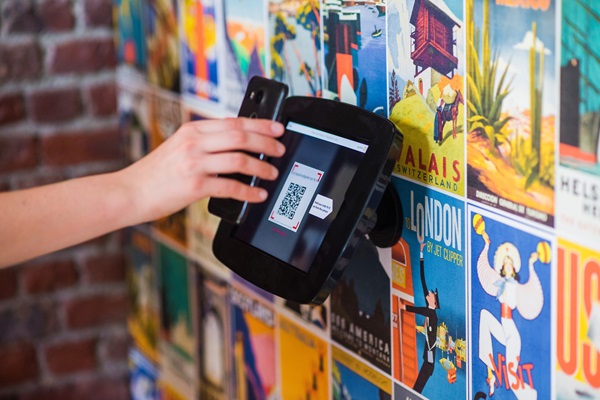Variety is known as the spice of life. It also can be the key to increased giving.
In addition to passing the plate, most churches collect tithes and offerings via websites, phone apps and text-giving programs. For some, kiosks can be another viable option.
What is a giving kiosk?
A giving kiosk amounts to a piece of equipment placed in a public area to collect financial gifts electronically. Kiosks specifically made for churches are available in a wide range of models and prices.
There are three basic types:
- Free-standing ATM-like machines purchased from and managed by outside contractors such as SecureGive.
- Table-mounted electronic tablets with data-collection software provided by companies such as Tithely or SimpleGive.
- Electronic card readers, such as Square, that are similar to card scanners used by retailers.
What are the benefits of a giving kiosk?
Convenience, security and efficiency are three primary advantages of giving kiosks.
Few people carry cash and checks are becoming obsolete. Credit and debit cards as well as online payment options such as Venmo and Paypal are growing in popularity. Kiosks provide congregants the opportunity to give with a card. They also can be set up to suggest amounts to give and provide users the option of setting up recurring gifts.
As for security, the more people involved in a transaction, the greater the risk that cash and checks get lost, stolen or miscounted. Giving kiosks eliminate the middleman. Cards are swiped, but do not retain the numbers. The financial gift goes from the giver’s account to the church’s bank account and is available for use almost immediately.
Efficiency in the form of improved data collection and organization is another reason why your church should consider a giving kiosk. Kiosks help monitor giving trends. Email receipts and thank-you texts can be sent automatically, and most software programs integrate with current accounting programs and customer relationship management software. Some kiosks provide a designated place for various services, including visitor check-in, event registration and volunteer sign-ups.
Like what you're reading and the tools we provide?
What are the disadvantages?
Most of your congregants probably have a “personal giving kiosk” in the form of a cellphone. A giving kiosk may be redundant if most of your church gives via an app or website.
Parishioners may find it uncomfortable to give publicly. Kiosks can give corporate-type vibes, and some people have a general distrust of machines. Also, the number of people who can use a kiosk at a time directly correlates with the number of available kiosks. Waiting in line may be a deterrent.
Power outages, poor or inconsistent internet service and technological glitches can interrupt the process.
How can you maximize your investment?
One of the best ways to determine if a kiosk is right for your church is to talk with your members about their preferred methods of giving. If you opt for a kiosk, look at several options and compare costs, ease of use, available functions and customer service.
For starters, follow these simple tips:
- Set up your kiosk in a highly visible, easily accessible, well-lit area.
- If your kiosk uses a tablet or card reader, mount it to a table or wall for security.
- Customize the software with your church logo to increase trust.
- Post signage to attract attention and provide easy-to-read instructions.
- Accept all credit and debit cards.
- Clean the equipment regularly.
- Promote the use of the kiosk to make congregants aware of the opportunity.
More options to give often equates to more giving. Kiosks are a physical reminder to give and make it easier to do so.

Tricia K. Brown is a Christian author and inspirational speaker. She shares stories of life, loss and laughter to encourage women to grow in their relationships with the Lord and each other. Her recent fiction release, “Seen, Heard, Beloved,” can be purchased on Amazon. For more information about her ministry and books, visit The Girls Get Together.

